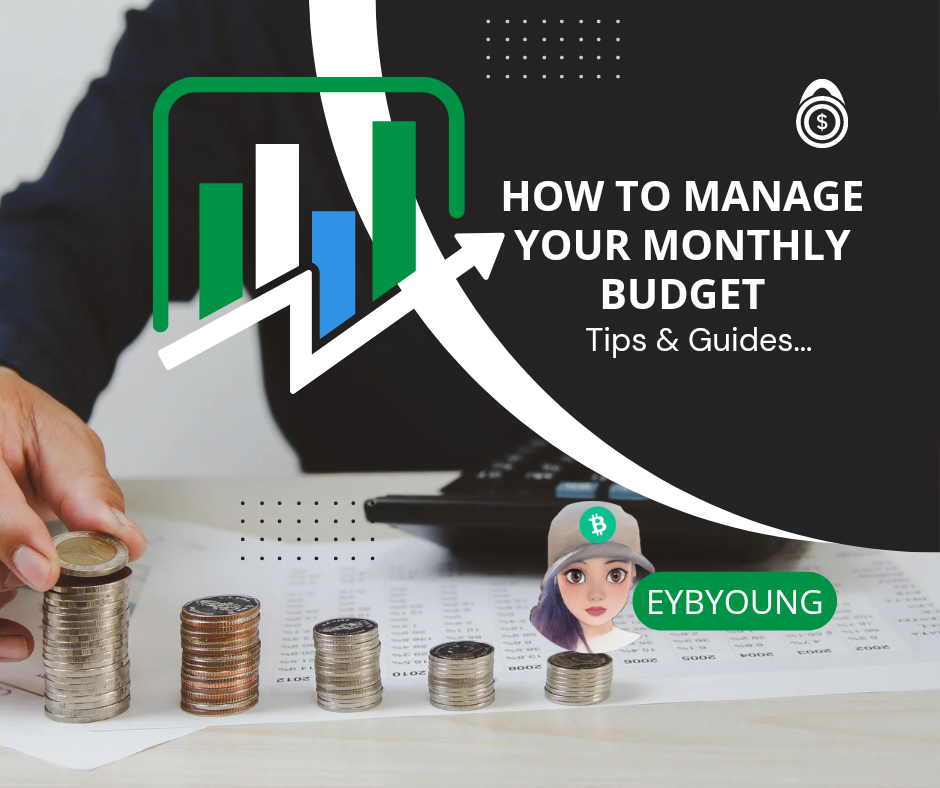How To Manage Your Monthly Budget

Budgeting is very important as it helps you ensure you have enough budget for the whole month. Without proper budgeting, you might run out of money before your next salary or paycheck comes. Managing your monthly budget is the best way to track your budgeting plans. It might be challenging but it isn't impossible if you follow simple steps.
Here are four ways how to help you manage your monthly budget:
Calculate or add all your monthly income
List down your monthly expenses
Determine your budget
Make a planner
These are the four ways how to manage your monthly budget, keep reading this blog as I am about to elaborate on each way to help you manage your monthly budget properly. Having a proper guide on how to manage your monthly budget is always helpful insight to kick-start your budgeting journey.
Calculate or Add All Your Income
One way to allocate your monthly budget properly is to calculate first how much your total earnings are in a month. Calculate and add all your income, whether it is from your salary, business net income, extra income, side hustles and etc. In that way, you'll know how much your total income is, so you can properly allocate expenses and more.
Some people do this and after calculating their monthly income they'll apply the 50, 30, & 20 rule. 50 percent of their total income is intended to pay the expenses such as bills, rent, food, transportation and etc. 30 percent of their monthly income is for wants if they buy something that does not belong to daily expenses. Lastly, 20% is allocated for savings and paying for debt.
Adding all your monthly net income makes it easier to break down the budget.
List Down Your Monthly Expenses
Listing down your monthly expenses will help you track your expenses accordingly. Once you have clear data on your monthly expenses, you can easily allocate your budget to it.
There are several ways of tracking your monthly expenses, here's how:
Check your account statement
Categorize your expenses
Build your budget
Check Your Account Statement
Checking your accounts will help you pinpoint your spending patterns. Start taking inventory of all of your accounts such as checking and all credit card you have.
Our expenses have two categories which are fixed expenses and variable expenses. Fixed expenses are those bills that will come to you monthly such as rent, utilities (water bill, electricity internet &, etc), insurance, and debt payments. While variable expenses are food, clothing, travel, etc as it has room for changes monthly.
Categorize Your Expenses
Start grouping your expenses. it will help you identify where your expenses fall and determine where you spend a lot most of the time.
Categorize your expenses according to:
Needs
Wants
Savings & debt payments
If you follow the 50-30-20- rules, 50% should fall on your needs, 30% for wants, and 20% for savings and debt payments. You can read thorough details about this in the article "Tracking Monthly Expenses: The First Step to Money Success" to learn more.
Build Your Budget
Build your budget by adding up all your expense according to their category such as needs, wants and savings/debts then subtract it from your monthly income.
You can also use a budget tracking app and input all your expenses and your monthly income to track it clearly. It will also help you save time doing a manual listing of expenses and manual calculations. Once you settle on a certain budget tracking app, you just need to visit it from time to time for some adjustments for accurate tracking of your monthly expenses.
Determine Your Budget
Determining your budget will help you manage your monthly budget well. Do not spend more than what you are earning. Live according to your means or even below your means to help you have successful monthly budget management.
Don't spend on things that are not on your budget list. If you want to buy something that is pricy and out of your budget allocation, try saving on it first or you can opt to use the credit option but it will add to your debt payment bracket.
Make a Planner

Image from: Canva
You can write your monthly expenses in a planner. You can use the template above or make your personalize planner. As you can see the image consists of details of income (income 1&2), and expenses (month & budget) in the upper while in the middle such as Bill to be paid, due date, the amount paid, and notes as well as total income, total expenses and differences on the lower part. That's how you should break down your monthly budget planner.
Writing a planner will help you determine your monthly expenses and will help you recall your expenses or which part you spent the most, so you can find ways how to lessen it on next month expenditures.
To Sum It Up
Doing a monthly budget is not easy, but neither impossible as well if you just have the will to follow some guides for an effective budgeting strategy. Managing the monthly budget nowadays is very important, especially since inflation is getting us broke.
Having proper monthly budget management is one way of achieving financial stability. You can't be financially independent if you don't even know how to do proper budgeting and it will always start on our monthly budget.
Lead Image: Created via Canva



Ang hirap nga magbudget lalo n pag d sapat 🤣